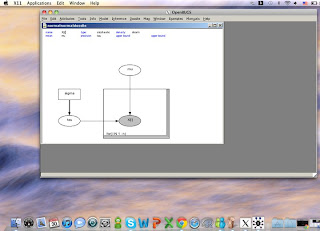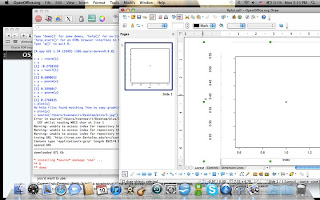Print : we use print when we want R to print something.
Cat: we can use the cat function as an alternative way to ask R to print something.
> pi
[1] 3.141593
> sqrt(2)
[1] 1.414214
> print(pi)
[1] 3.141593
> print(sqrt(2))
[1] 1.414214
> print(matrix(c(1,2,3,4,5,6,7,8),4,4))
[,1] [,2] [,3] [,4]
[1,] 1 5 1 5
[2,] 2 6 2 6
[3,] 3 7 3 7
[4,] 4 8 4 8
> print(list("a","b","c"))
[[1]]
[1] "a"
[[2]]
[1] "b"
[[3]]
[1] "c"
> print("The zero occurs at"); print(2*pi); print("radians")
[1] "The zero occurs at"
[1] 6.283185
[1] "radians"
> cat("the zero occurs at", 2*pi, "radians.", "\n") # using (\n) to terminate the line
the zero occurs at 6.283185 radians.
> x<-c(2, 3, 5, 7, 11, 13, 17, 19)
> cat("The prime numbers under 30 are:",x,"...\n")
The prime numbers under 30 are: 2 3 5 7 11 13 17 19 ...







